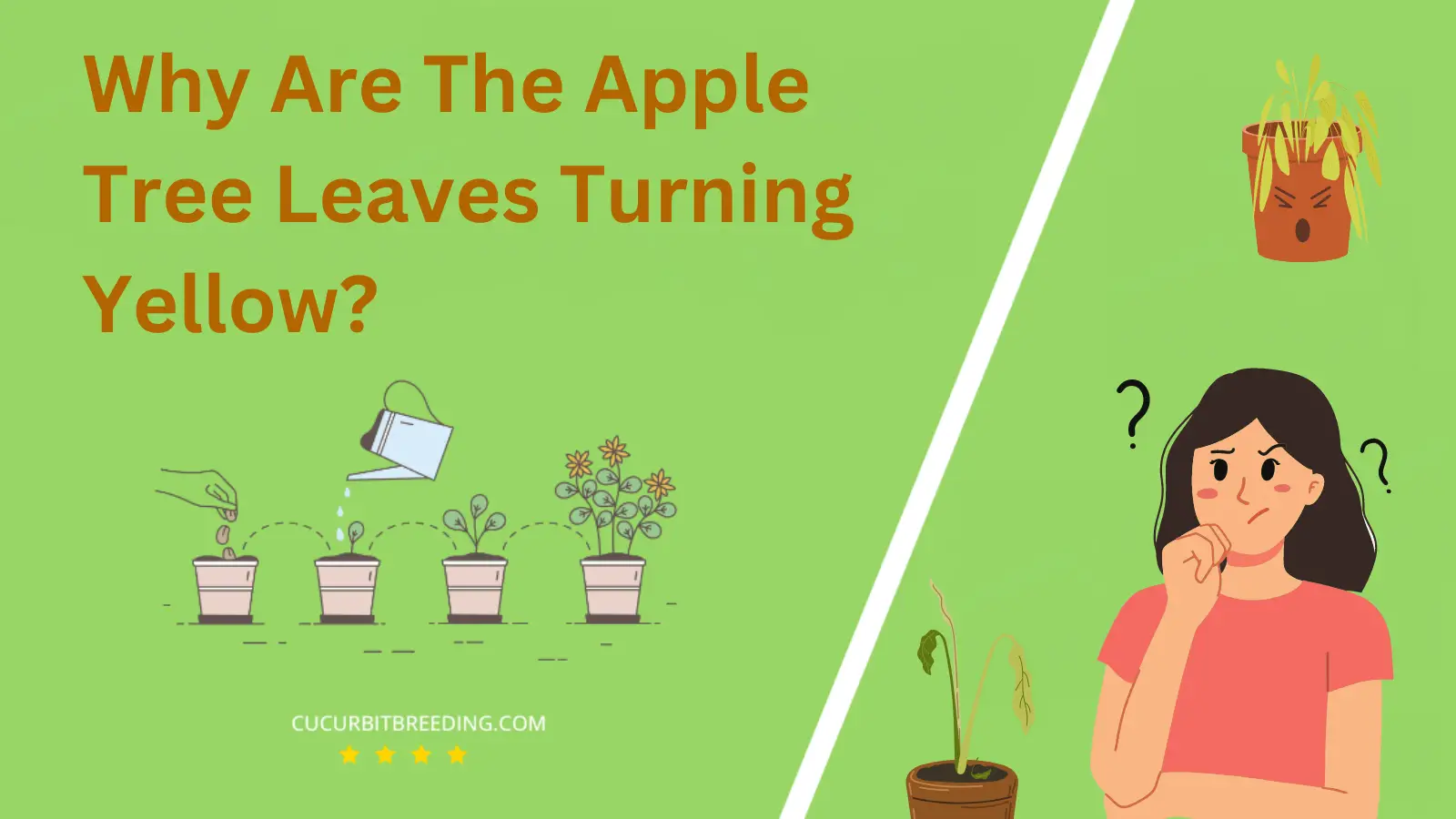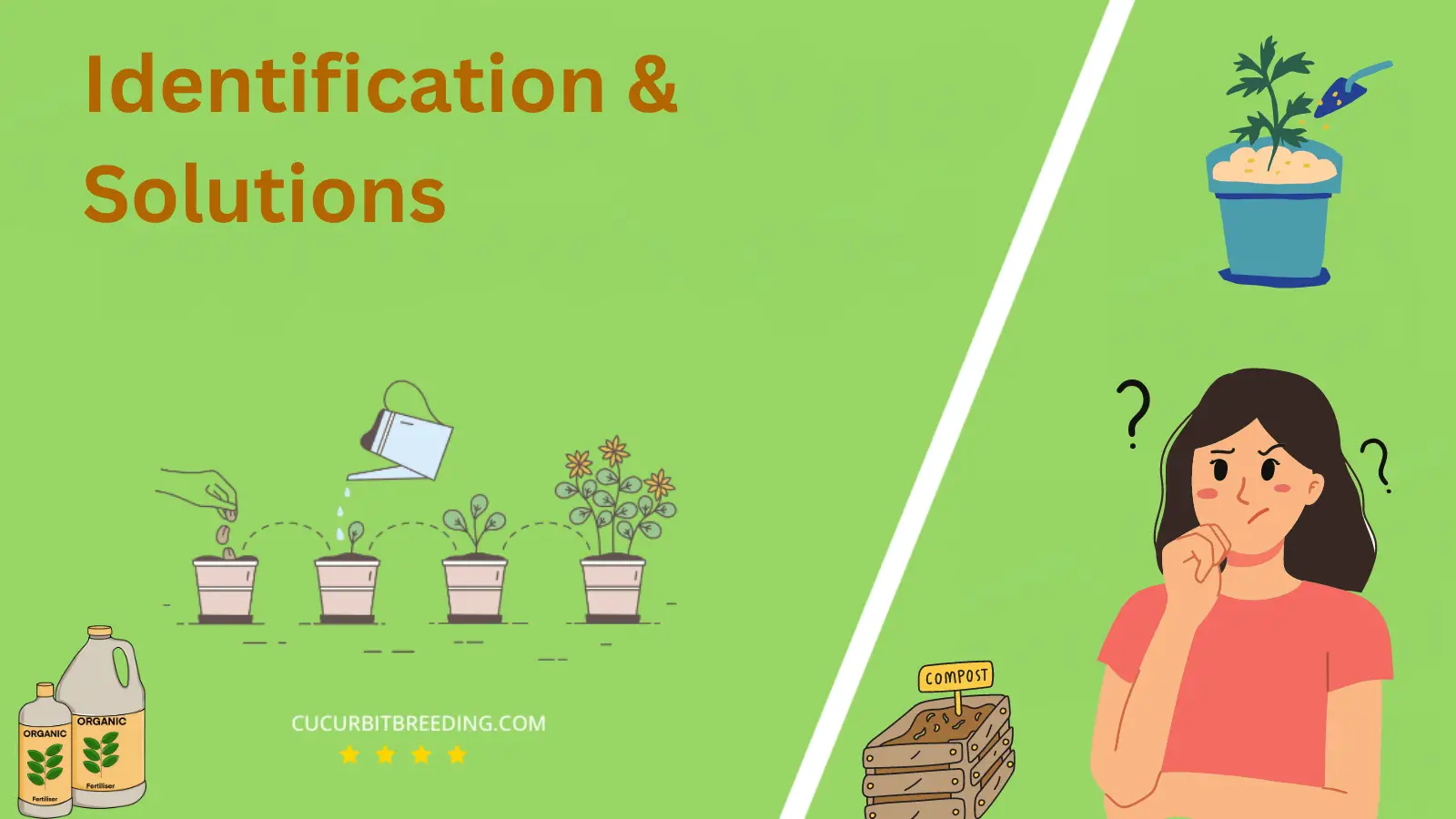
Have you noticed your apple tree leaves changing their vibrant shade to a sickly yellow? This troubling transformation piques the curiosity of every specialist gardener and can transform your once lush orchard into a cause for concern. Understanding why apple tree leaves turn yellow is an intriguing journey into the world of horticulture.
Various interwoven factors could be responsible for these leafy makeovers ranging from infestations, disease, to nutrient deficiencies. Let’s unfold this chlorophyll laden mystery, shall we?
Why Are The Apple Tree Leaves Turning Yellow?
1. Nutrient deficiency
| Description | The yellowing of leaves in apple trees can occur due to a nutrient deficiency. |
|---|---|
| Solution | Ensure proper nutrient balance through soil testing and appropriate fertilizer application to prevent yellowing leaves. |
Yellowing leaves on an apple tree can often be traced back to a nutrient deficiency. Certain key nutrients like nitrogen, iron, and magnesium play a crucial role in maintaining the healthy green color of leaves. Nitrogen is specifically vital for chlorophyll production, the pigment that gives leaves their green color. When these nutrients are deficient, leaves lose their vibrant green hue, turning yellow instead.
If you suspect a nutrient deficiency is causing the yellowing of your apple tree leaves, you can take several steps to rectify the situation. Fertilization is usually the most effective solution. Apply a balanced, slow-release fertilizer that is formulated for fruit trees. This delivers the essential nutrients to the tree’s root system, helping replenish what the tree lacks. Be sure to water in the fertilizer well and continuously monitor the tree’s progress.
Also, consider having a soil test performed. This will provide a clearer understanding of your soil’s nutrient composition and pH level, allowing you to make precise adjustments for your unique conditions. Lastly, always ensure your apple tree is treated with proper care. Regular pruning, adequate watering, and pest control all contribute to a healthy, robust tree.
2. Overwatering or poor drainage
| Description | can lead to root damage, inhibiting nutrient uptake and causing yellowing of leaves. |
|---|---|
| Solution | Water the apple tree less frequently or improve the drainage system to prevent overwatering. |
Effects of Overwatering or Poor Drainage: When an apple tree receives too much water or has insufficient drainage, it can cause the apple tree leaves to turn yellow. It’s a common issue known as waterlogging. This happens because too much water suffocates the roots by filling up all the air spaces in the soil, reducing the oxygen available for the roots. Over time, this leads to root rot, nutrient deficiencies, and the yellowing of leaves, as the roots are unable to properly absorb nutrients from the soil.
Solutions: To solve the problem of overwatering or poor drainage, it’s essential to adjust your watering routine. Make sure to give your apple tree a deep but infrequent watering schedule, allowing the top inch of soil to dry out between waterings. Improve the soil structure and add organic matter like compost to increase its ability to drain. If drainage issues persist, consider implementing a more effective drainage system, like a French drain or raised beds. This will help ensure that your apple tree is getting the right amount of water and draining properly, returning the leaves to their healthy green color.
3. Pest infestation
| Description | The apple tree leaves turn yellow due to pest infestation, disrupting their normal nutrient absorption. |
|---|---|
| Solution | Apply appropriate insecticide to remove pests and restore leaf color. |
The infestation of pests can lead to the yellowing of apple tree leaves. Specifically, pests such as aphids, mites, and scale insects feed on plant sap from the leaves. This feeding can significantly weaken the plant and cause yellowing leaves due to nutrient deficiencies.
Solution: Regularly inspect your apple trees for pests, particularly on the underside of leaves where many pests like to hide. If pests are found, they can often be controlled through the use of an insecticidal soap or horticultural oil. These are generally sprayed onto the tree to kill off the pests. In severe cases, it may be necessary to prune infested branches to prevent the spread of pests to healthy parts of the tree.
Deciding on the pest management strategy depends on the type and severity of the infestation. It is crucial to correctly identify the pest causing the problem, as different pests require different control methods. In all cases, maintaining a healthy tree through proper watering, fertilizing, and pruning practices will make it less susceptible to pest damage.
4. Disease or fungal infection
| Description | The apple tree leaves turn yellow due to pest infestation, disrupting their normal nutrient absorption. |
|---|---|
| Solution | Apply appropriate insecticide to remove pests and restore leaf color. |
When your apple tree leaves are turning yellow, one possible problem could be a disease or fungal infection. Diseases and fungi can interfere with a tree’s ability to properly gather and distribute nutrients. This disturbance can cause the leaves to turn yellow as they lose their health and vigor.
To rectify this issue, you’ll need to identify the specific disease or fungus. You can do this by closely examining the leaves or taking a sample to a local garden center or extension service.
Once you’ve identified the problem, you can treat it with an appropriate fungicide or disease control spray. Spray the entire tree, focusing on the undersides of the leaves where diseases and fungi often thrive.
Be sure to follow the manufacturer’s instructions for the best results. In general, it’s a good idea to keep your tree as healthy as possible to prevent future problems. This means providing adequate water, fertilizing regularly, and properly pruning to increase airflow.

5. Environmental stress (such as extreme temperatures or drought)
| Description | Apply appropriate insecticide to remove pests and restore leaf color. |
|---|---|
| Solution | Provide adequate water and ensure proper temperature control to prevent apple tree leaf yellowing. |
Environmental stress such as extreme temperatures or drought can cause apple tree leaves to turn yellow. This occurs because these harsh conditions can reduce the tree’s ability to absorb and process necessary nutrients and water. Leaves lack the required elements for photosynthesis which leads to a condition known as chlorosis, visible in the form of yellowing leaves.
To recover the apple tree from yellowing leaves, you need to address these environmental stresses. Firstly, ensure consistent watering practices. Trees should be watered deeply and infrequently rather than a little and often, to encourage a deep root system that can withstand drought conditions. Water early in the day to minimize evaporation.
Secondly, provide shade or windbreaks to protect the tree from extreme temperatures. When temperature extremes can’t be avoided, you can help the tree by ensuring proper mulching in the root zone to maintain soil moisture and insulate the roots from temperature fluctuations.
Last but not the least, consider soil amendments or fertilizers if necessary, to improve nutrient content in the soil. These actions will help to alleviate the stress on your apple tree, improving its health and the color of its leaves.
6. Natural leaf aging and shedding
| Description | occurs, resulting in chlorophyll breakdown and revealing underlying yellow pigments. |
|---|---|
| Solution | Ensure proper watering, sunlight, and nutrient balance to prevent yellowing of apple tree leaves. |
Leaf aging is a natural process that occurs in all plants, including apple trees. As the leaves get older, they begin to turn yellow. This happens because the plant redirects its resources, including essential nutrients, towards the newer, developing leaves. During this process, the older leaves may lack the necessary nutrients to maintain their green pigment, resulting in a yellow color.
To manage natural leaf aging and shedding; you should mostly let nature take its course. However, good watering practices can help: make sure your apple tree is getting enough, but not too much water. Overwatering can stress the tree and hasten leaf aging. Regular pruning can help direct energy to the right places in the tree, reducing the impact of leaf aging. Also, a balanced fertilizer can replenish nutrients in the soil, supporting leaf health. Always check the label to ensure the fertilizer is suitable for fruit trees.
7. Soil pH imbalance
| Description | Can cause nutrient deficiencies, affecting chlorophyll production and causing leaves to turn yellow. |
|---|---|
| Solution | Adjust soil pH using appropriate amendments and regular monitoring to maintain optimal levels for growth. |
Apple tree leaves can turn yellow due to a problem commonly known as chlorosis. Chlorosis relates to the insufficient production of chlorophyll, the pigment that gives leaves their green color. Due to this, leaves may turn pale or yellow. It results from deficiencies of certain essential nutrients like iron, nitrogen, or magnesium.
Iron deficiency, in particular, inhibits the synthesis of chlorophyll. Overly alkaline soil, poor drainage, or root damage can cause this deficiency. When the root system’s absorption ability is compromised, it can’t uptake sufficient nutrients, leading to yellowing leaves.
To fix the issue, amend the soil with iron supplements or a balanced tree fertilizer. Ensure the soil pH is around 6 – 7, appropriate for apple trees. Implement a proper watering schedule to avoid waterlogging, which can further stress the tree. If root damage is observed, it may be necessary to prune the roots or transplant the tree.